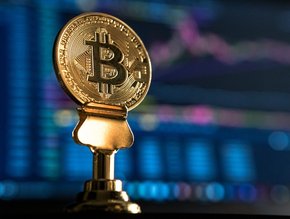The path through economic uncertainty in banking

If there’s one word to describe the economic outlook of the global banking landscape, it’s unstable. This year has already seen the sudden collapse of the seemingly safe banking institution Silicon Valley Bank (SVB), which fell apart in a remarkable 48 hours after struggling with a ‘hole’ in its finances. Collapses haven’t been endemic to just North America either – Switzerland’s second-largest bank, Credit Suisse, collapsed in March 2023 before being purchased by its rival UBS in a US$3.3bn deal.
Sparking fears of a pandemic of instability in global banking and a string of further collapses, German Chancellor Olaf Scholz was prompted (or forced) to allay fears over a major banking collapse in an address to the European Parliament, saying banking – in the EU at least – “remains stable”.
Notwithstanding attempts to reassure markets, trust in the stability of global banking institutions remains tentative. Uncertainty itself poses problems too, particularly for bank lending rates. Throw in economic headwinds and fears of a potential recession, and it’s clear that banks need to adjust risk governance to deal with these external factors.
Uncertainty in banking: The lay of the land
While some, like Scholz, have been key to play down the impact of bank closures this year, Dow Jones Head of Risk & Compliance, Joel Lange, believes the collapse of SVB “rocked the banking world, sending regulators racing to stabilise the global financial system on both sides of the Atlantic.”
He adds: “This was a major failure of corporate governance. Reports following SVB’s collapse indicated that the bank operated without a full-time chief risk officer for more than a year and that the board risk committee met frequently in the lead-up to the collapse, suggesting they knew they were treading along a dangerous path for quite some time.”
While a failure of corporate governance may suggest recent bank collapses are isolated incidents, Professor at King’s Business School and Director of the Qatar Centre for Global Banking & Finance, David Aikman, feels SVB’s collapse is a significant “warning sign for the future”.
He notes: “The problems that led to the downfall of SVB bank in the United States and similar institutions persist. Despite their large size, these US banks were not subject to the stress testing rules and the strictest capital and liquidity requirements, and they consequently remain vulnerable to the impact of higher interest rates.”
While this may suggest banking issues are “more regional (US) rather than global”, as claimed by Synpulse’s Managing Director Marouane Bakhtar, Aikman notes that Europe is facing highly stretched housing markets, in addition to risks in the commercial real estate sector.
“Many European banks operate with wafer-thin capital ratios supporting their housing market exposures, so the degree of resilience to these losses is not that great,” explains Aikman. “These issues build on pre-existing vulnerabilities in the EU banking system, and its ties with sovereign debt positions, that have not fully been addressed.”
Banking uncertainty: Tightening lending rates
It is clear uncertainty in the global banking landscape is widespread, and with that comes knock-on effects.
SunTec President Amit Dua notes: “The lending standards in US banks have been tightened and this trend is anticipated to persist throughout the year”; a result of an anticipated decrease in the credit quality of loan portfolios and collateral values of customers, reduced risk tolerance, concerns regarding bank funding costs, liquidity positions, and deposit outflows.
The picture may not necessarily be the same in all markets though, as according to Bakhtar, “the situation seen in the US looks different in the UK. Indeed, as of May 2023, net mortgage lending was expected to grow 1.25%, rising by £29bn, showcasing UK’s ability to dodge recession.
“The situation is quite similar in Asia, predictions expecting impacts on loan to be moderate, mainly driven by a sharp rebound in activities in China, as the region has not been affected by global banking stresses.”
So, while the impact of global banking uncertainty may differ in extremity from market to market, for Aikman, the clear factor driving falling loan rates is uncertainty itself, “which is really a euphemism for a more pessimistic outlook for the economy”.
How banks can mitigate headwinds to reinstall confidence
While the impact of economic uncertainty on lending rates is clear, SunTec’s Dua feels it’s how banks act now that can determine future confidence in the market.
He says: “Banks must now re-think their deposit strategies and innovate to deliver enduring customer value. The bank of the future requires breaking free from transactional relationships and becoming trusted advisors to customers.”
For Dow Jones’ Lange, risk management is “critical” for bringing back trust in global banking markets, and says banks should sharpen their corporate governance practices.
He adds: “Reliable and robust risk data has always been imperative, but the current economic landscape is putting compliance in the spotlight like never before. In light of this, it is imperative that banking stakeholders are basing their decisions on timely, trustworthy sources.”
Meanwhile, Aikman feels banks can improve risk management by “bolstering their capital and liquidity positions, providing them with greater resilience to absorb any future shocks.”
This is further echoed by Bakhtar, who suggests banks “action a number of levers to ensure they stay safe in a tougher economic environment”. For Bakhtar, this consists of three things in addition to robust risk management frameworks. “The first is they need to have sufficient capital buffers to weather any downturns (doing this either by raising capital through equity or debt issuances, or else by retaining earnings).
“Secondly, they need to reduce their risk exposure by diversifying their portfolios and reducing their over-reliance on a sector or region. Third, I believe it is crucial for them to look at operational efficiency, and streamline legacy systems, processes, and organisations to reduce costs.”
The future of economic uncertainty in banking
It is clear that limiting any wavering instability is achievable for financial institutions, should best practices be maintained. And while economic headwinds may be making life more difficult for banking institutions now, many – including Convera CEO Patrick Gauthier – believe “global markets will be bullish” onwards from 2024.
So, is the future of economic uncertainty in banking temporary, or will it be a long-lasting issue?
As far as Dua is concerned, “the bank consolidation trend is likely to continue given the financial pressure and other factors at play.” While for Lange, “there will continue to be winners and losers based on the risks taken by banks”. He believes “it is important for both consumers and regulators to ensure they understand these risks through diligence and oversight.”
So, while it is difficult to make any prediction, Synpulse’s Bakhtar believes “there should be minimum standards and practices that banks should apply to how they run businesses, so they can move from being a passive compliance-driven approach to a proactive risk management culture.”







